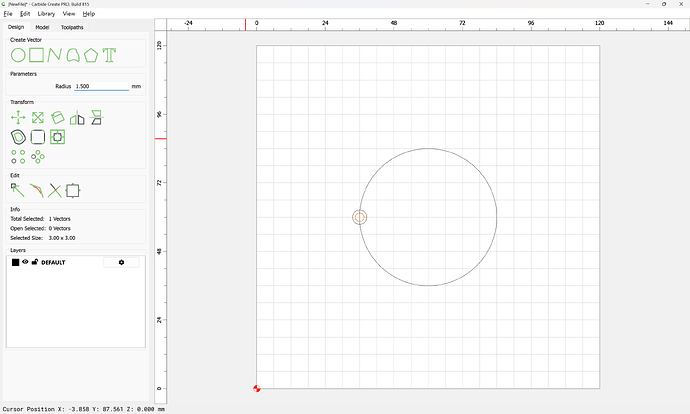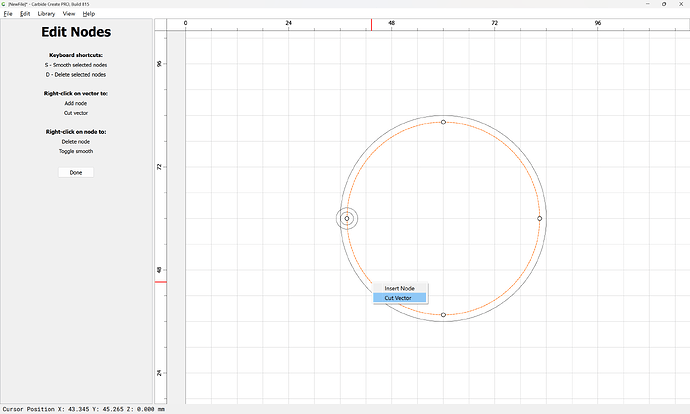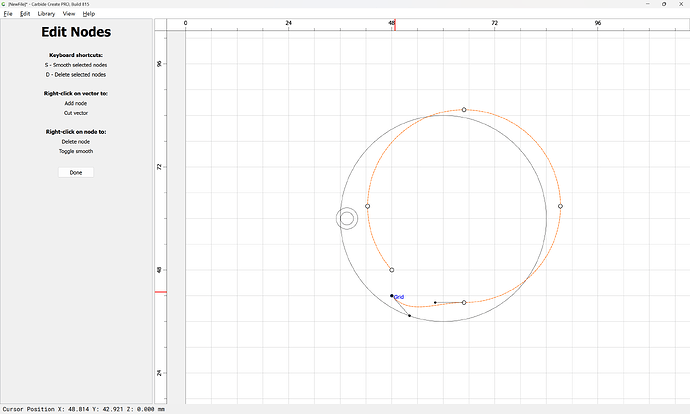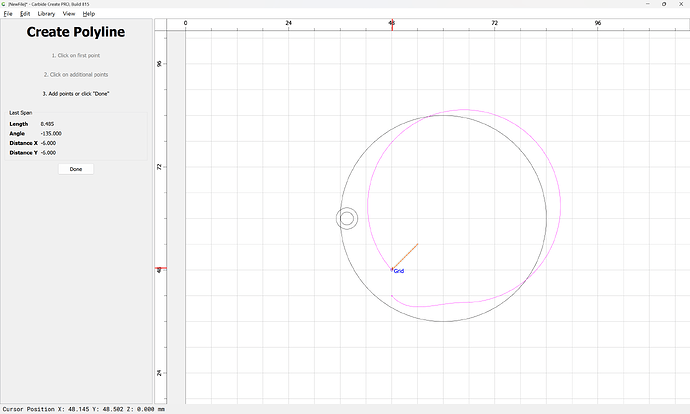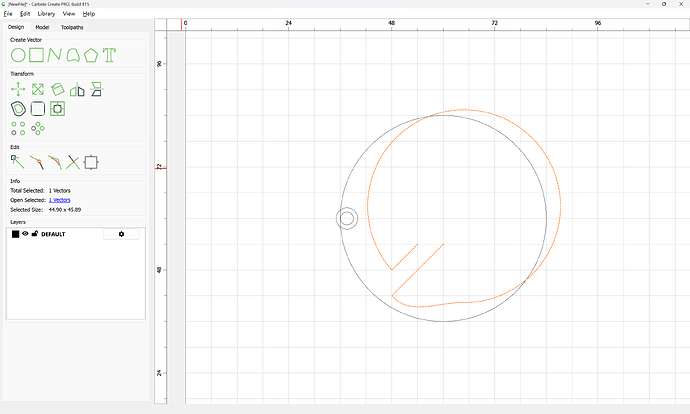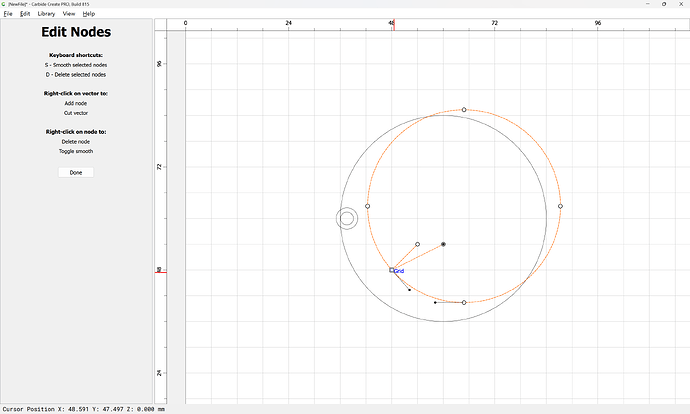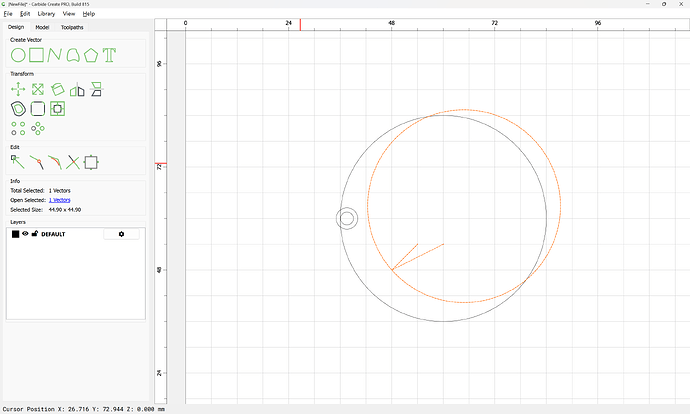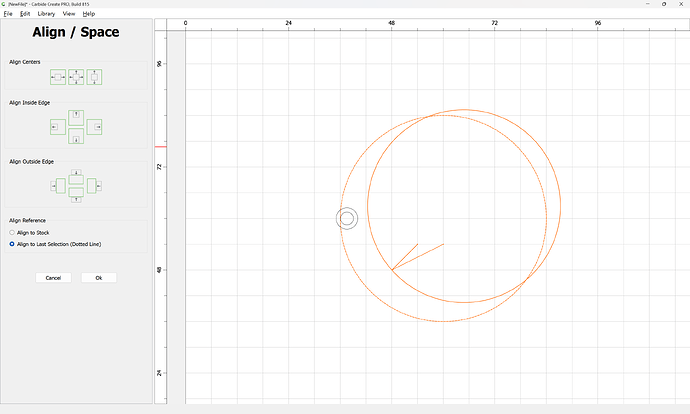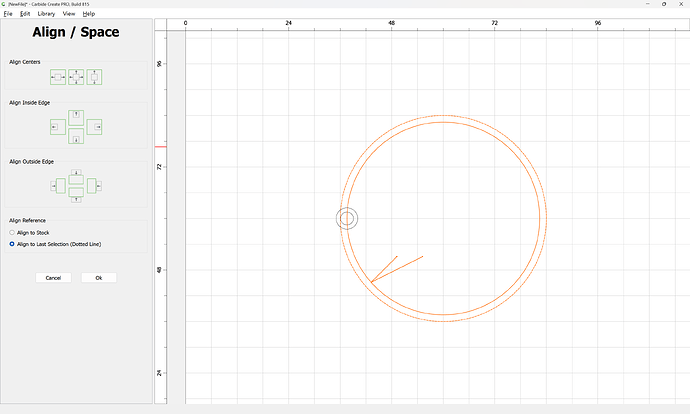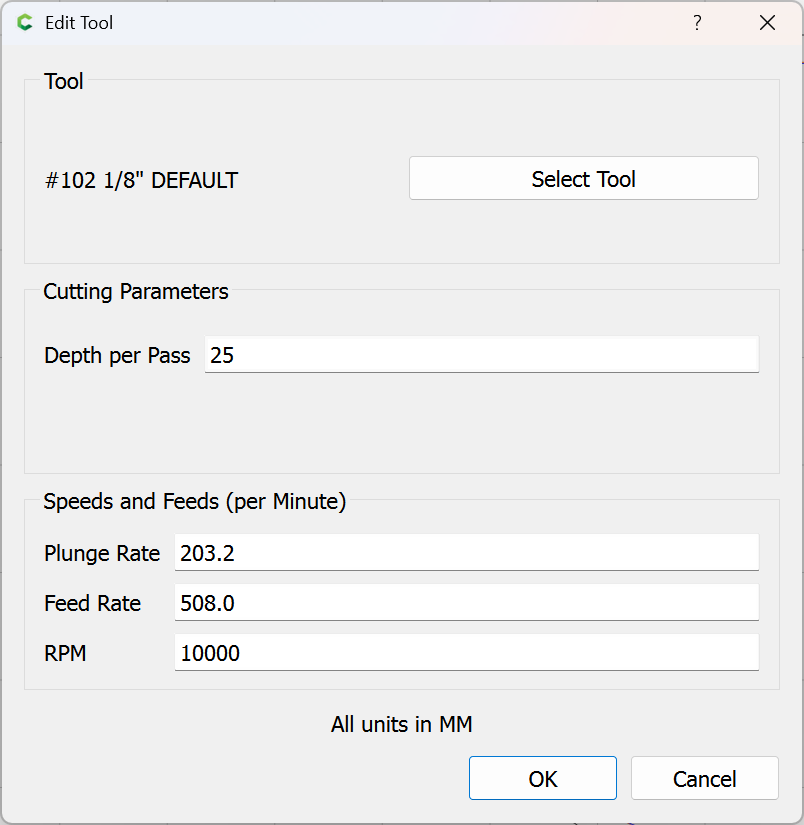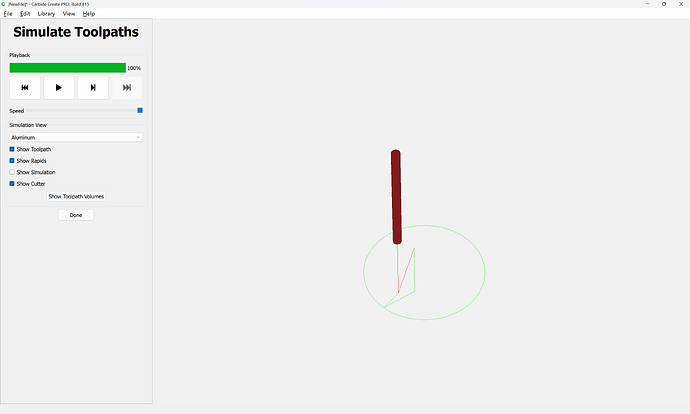Hello, I am new to CNCs and have looked everywhere I can for the answer to making an undercut that is NOT a keyhole. I have been messing around with Carbide Create without a machine and learning the software but cannot access Carbide Motion without a machine.
Question: How can I create a custom vector path that would create an overhang on the inside of a bowl like in the picture attached without it coming back up and breaking the lip off?
I’ve seen this done in VCarve to do the keyhole with a custom path.
Thank you for your time.
I get this when i click the link. " Oops! That page doesn’t exist or is private."
I expect we’ll get the relevant post here given some time ![]()
That said, the TLDR is that you can manually draw the tool paths in carbide create. This lets you specify entry and exit.
Though, admittedly, it can be a bit of a chore to set up.
The short answer is yes. You can create stand-alone vectors for a tool to follow specifically. But CC is not capable of simulating the result of that kind of tool shape & cutting action.
Yes. This was recently discussed here, and I worked up a solution … here, from a PM:
Draw a circle of the desired diameter:
Draw a circle of the diameter which the threadmill will cut:
and which shows the diameter of the shaft:
Duplicate and reduce the diameter of the original circle by the shaft diameter, plus a bit of clearance (assuming one wants to cut the groove as deeply as possible)
Reposition the tool proxy to get an idea of what the cut/clearance will be like:
Select the inner circle which will be used for the toolpath:
and go into Node Editing mode:
and right-click where you want the path to begin/end cutting:
Done
Drag that new node to a grid intersection:
go into Node Edit mode again:
and drag one of the nodes to a different grid point:
Done
Draw in two lines which are longer in length than the cutting radius of the tool:
Done
each of which connects to a begin/end point:
Done
Select the open geometry:
and use Join Vectors to connect things:
Yes
Go back in to Node Edit mode:
dand drag the re-positioned node back into position:
Done
Re-align the edited geometry with the original
Align Vectors
Assign a No Offset Contour toolpath:
setting the Depth per Pass:
to be greater than the Max Depth:
and when you preview the cut you should see that it will plunge to that depth, move in to the cut sideways, follow the geometry to the end, then lift after exiting the cut.
Thank you!!! Will try this on the program soon.
I see you use CC, whats your thoughts on Vcarve?
I bought Vectric Vcarve ages ago for a particular project.
I found the interface cluttered and confusing and visually noisy, and never used it after, except for support, so I quit buying updates.
Thank you for your help on this, is there any way to have it plunge after the first path down z amount and then pull out?
What you describe would be a Drill operation.
If you mean that you want it to make the cut along the geometry as a No Offset Contour plunging to full depth and staying down until it is time to exit, then yes, that was described above — just set Depth per Pass > Max Depth — as noted above, this can be verified by noting the green lines which show tool movement.
Okay, after being on this and Vcarve, Vcarve is still confusing so CC is alot more beginner friendly and more straightforward.
That being said ive attached my file and any feed back would be greatly appreciated.
Bowl with Lip.c2d (212 KB)
Im not sure if the bits i found exactly work but i left them in the notes and leaving links to them
Here>> *AstraHP Coated* Whiteside 1374 Bowl & Tray CNC Bit 3/4"D
&
Here>> *AstraHP Coated* Whiteside Flattening Router Bit 1/2" Shank
Your file is set up to make multiple passes for the undercut:
Increase your Depth per Pass:
So that it is greater than the Max Depth:
i was wanting a 1/2" taken out of the wall and didnt think it could cut that much at once without tear out or something. So once should be fine?
And with it only going down once like that wont it only take the bottom portion out leaving a 1.5" thick lip?
I would probably have set up multiple separate toolpaths each at the appropriate depth — but looking at the toolpath preview it looks as if that will work — I’d test in something easily cut (and inexpensive) first.
Thank you man, this has been a great help. I definitely will try this first chance I get.
Do you think the flattener will work best or should i use something else?
I believe you should use a keyhole cutter since it is designed for this sort of thing.
This topic was automatically closed after 30 days. New replies are no longer allowed.



